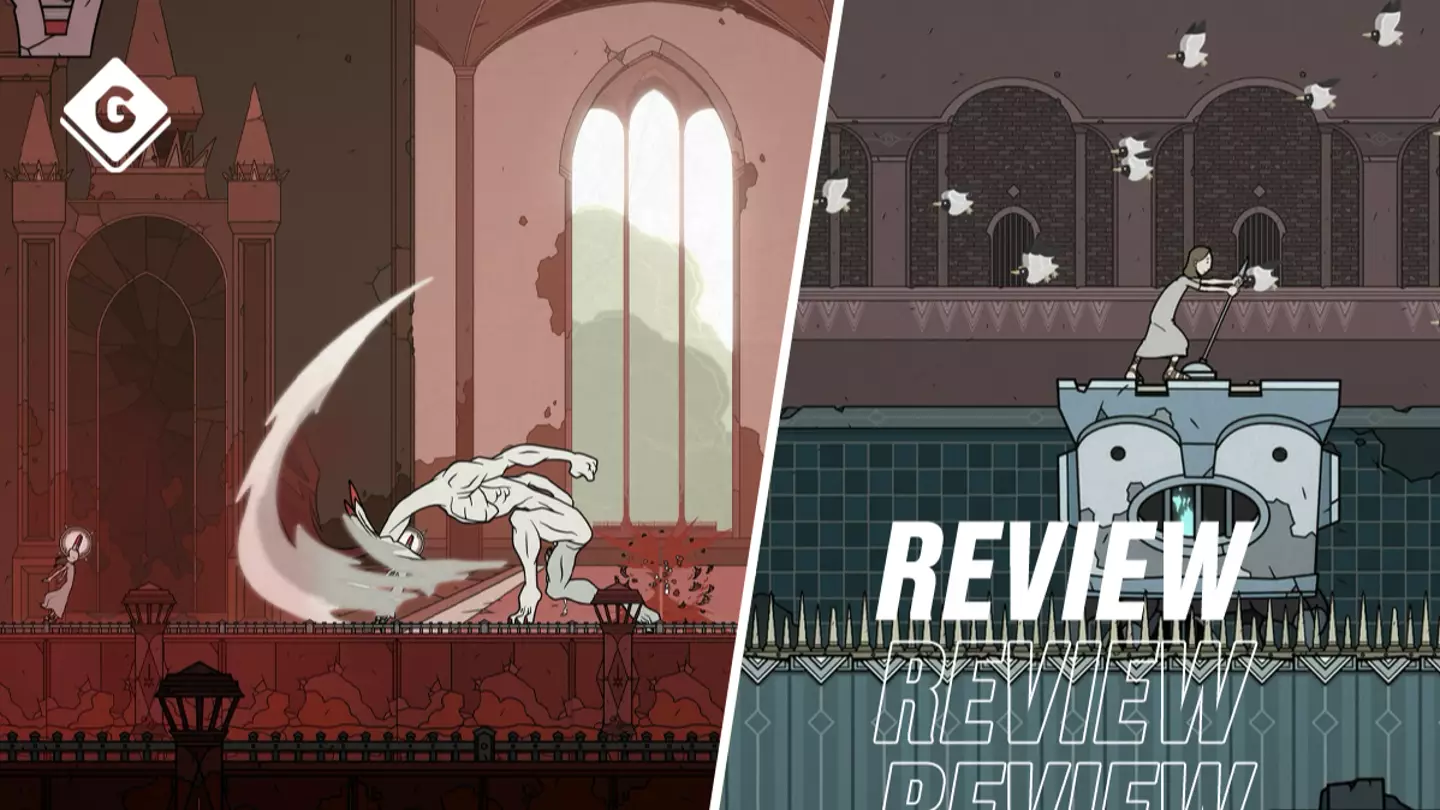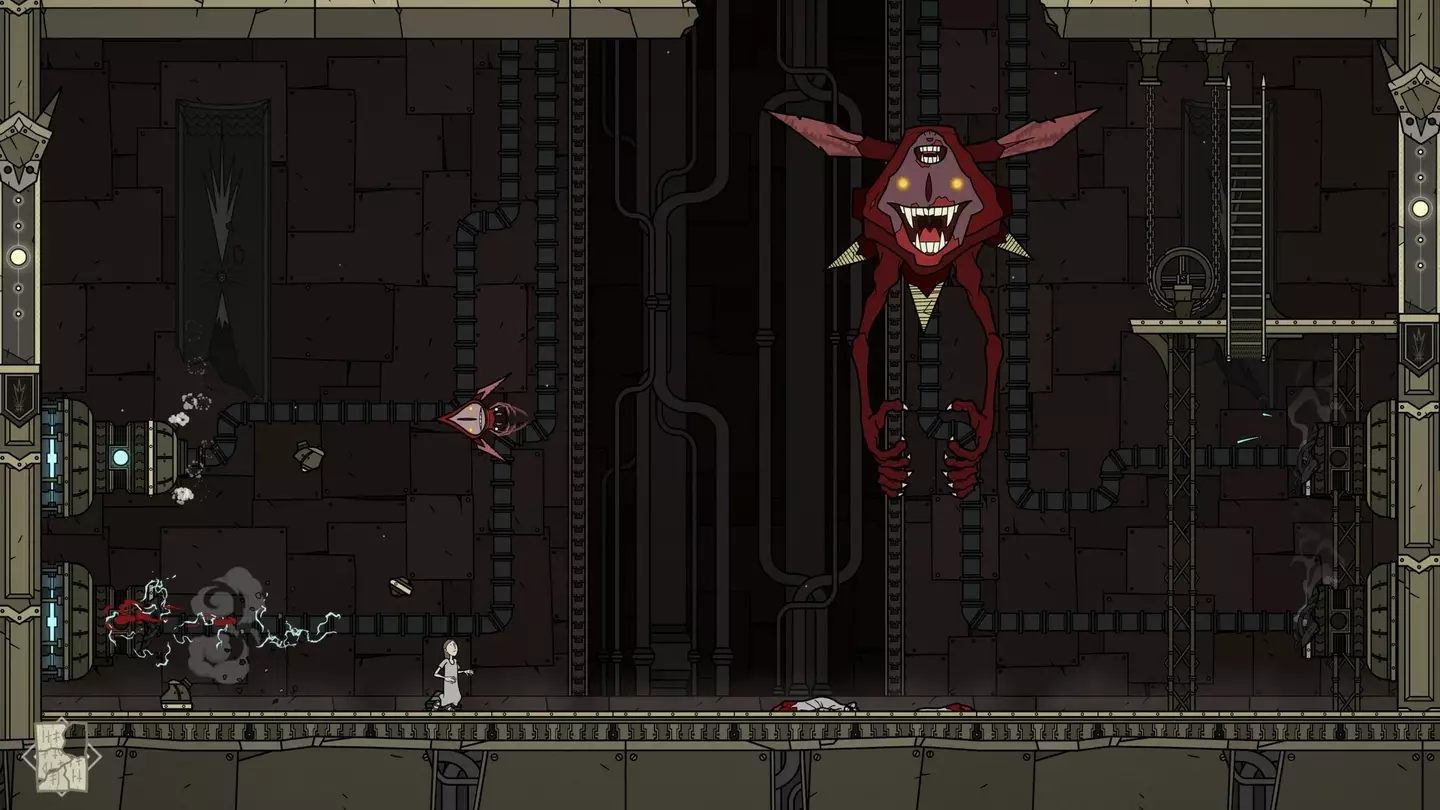
There’s a moment that arrived a few levels into my playthrough of Saviorless that made me want to launch my Nintendo Switch out the window. It wasn’t any of the game’s enemies, nor was it the platforming. It came in the form of a man who chronicles your journey through the collection of hidden pages, which are the game’s collectible. There are six to find in each level, and this chronicler appears near the end of the level for you to hand them in.
If you don’t have them all, he asks if you’d like to reset. But he doesn’t really say what it is he is resetting, not in specific terms. I thought, probably stupidly, that it would send all the pages back to where they were and I could try to collect them again at another time. No. No, that isn’t what happened. Instead, I got sent back to the start of the level losing all progress made up to the chronicler. It was a level that had already annoyed me because of some poor platforming decisions. I turned off my Switch, put it to one side and came back the next day.

I came back and from that point ignored the loose pages strewn throughout. What is the point of my collecting them from this level when I didn’t get them all for the first few levels? Instead, I decided to focus on the story and the platforming action. The latter we’ll come back to, the former is perhaps the most interesting aspect of Saviorless.
Advert
The game starts with three narrators, an elderly man flanked by his younger family members. They are, seemingly, omniscient narrators bound to tell the story of Antar, the game’s central character, for all eternity, never deviating from the tale they’ve always told. Until the old fella falls asleep and the youngsters take over, bringing in new characters and plot points.
It’s an interesting way to tell a story. The idea of the narrator’s job intertwines throughout the meeting of new characters who seemingly know Antar’s name, or are already familiar with them. It’s because the story is playing out in a cyclical style and it further breaks down and expands as you play through each level.
This is one of three reasons as to why I wish Saviorless was a better experience than what I played. The second reason is that this game was made by a Cuban team who, as they noted on their original IndieGoGo page, Saviorless is “a reflection of our personal experiences in Cuba, from the crumbling scenery to the unpredictable story to the stylized and hand-drawn artwork.” I visited Cuba in 2008 and fell in love with the country and its people. I could see the history of the country throughout my playthrough, whether that was in ruins of buildings, or in the changeable scenery which so depicts the ever-evolving style of Cuba.
There’s a storied history to the game, one that is told through utterly gorgeous hand-drawn visuals, which is my third reason. No matter the scene in front of me, I was constantly wowed by the design choices from the small details lingering in the background, or the depictions of unknown legends that drift throughout the lands in the form of monsters, or puzzles.

Sadly, the bread and butter of the game - its platforming and action moments, are often let down by quirky controls that often feel too floaty. There’s no solidity or weight to the jumping, and given that you only need to be hit once in order to be sent back to a checkpoint, it becomes a frustrating experience.
Advert
Antar isn’t a good hero in that their moments are clunky, they move too slowly which makes them feel like they’re wading through treacle, and this sometimes runs alongside points where you need to be faster than an environmental obstacle making it a confusing choice. Had Antar moved with some speed, and reacted swiftly, I’d have no complaints.
There are moments when you’ll take control of another character when the narrators go off the traditional path, and these are welcomed because they add new layers to the gameplay, like melee combat, something that Antar doesn’t rely on. But, because so much of the game is told while you’re in Antar’s shoes, there’s a sense of missed opportunity. Thankfully, the game isn’t very long at all, so while this is a sore point, in the grand scheme of things it’s over relatively quickly and I was left with a fondness for the odd interludes with different characters, set dressing, and accompanying audio design.
Pros: Gorgeous art, wonderful history and subtext to the design, intriguing and original story
Cons: Wonky and lethargic platforming, odd decisions on game mechanics
Advert
For fans of: A Highland Song, Prince of Persia, MetroidVanias
7/10: Very Good
Saviorless is available on Nintendo Switch (version reviewed), PlayStation, Xbox, PC, and Mac. Code for review was supplied by the publisher. Find a complete guide to GAMINGbible's review scores here.
Featured Image Credit: Dear VillagersTopics: Xbox, Nintendo Switch, PlayStation, PC, Steam
